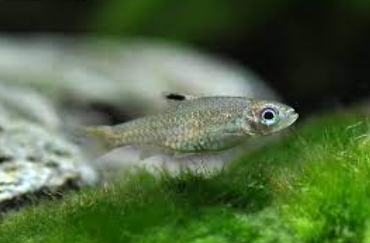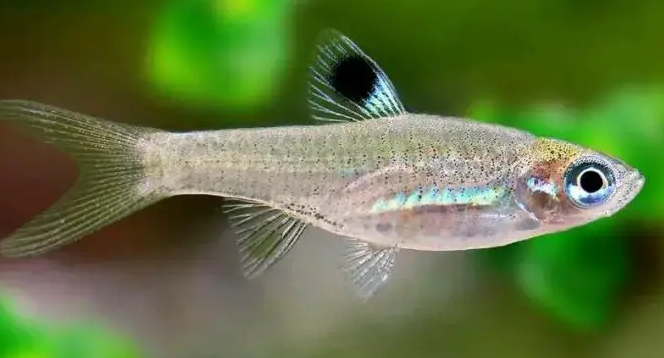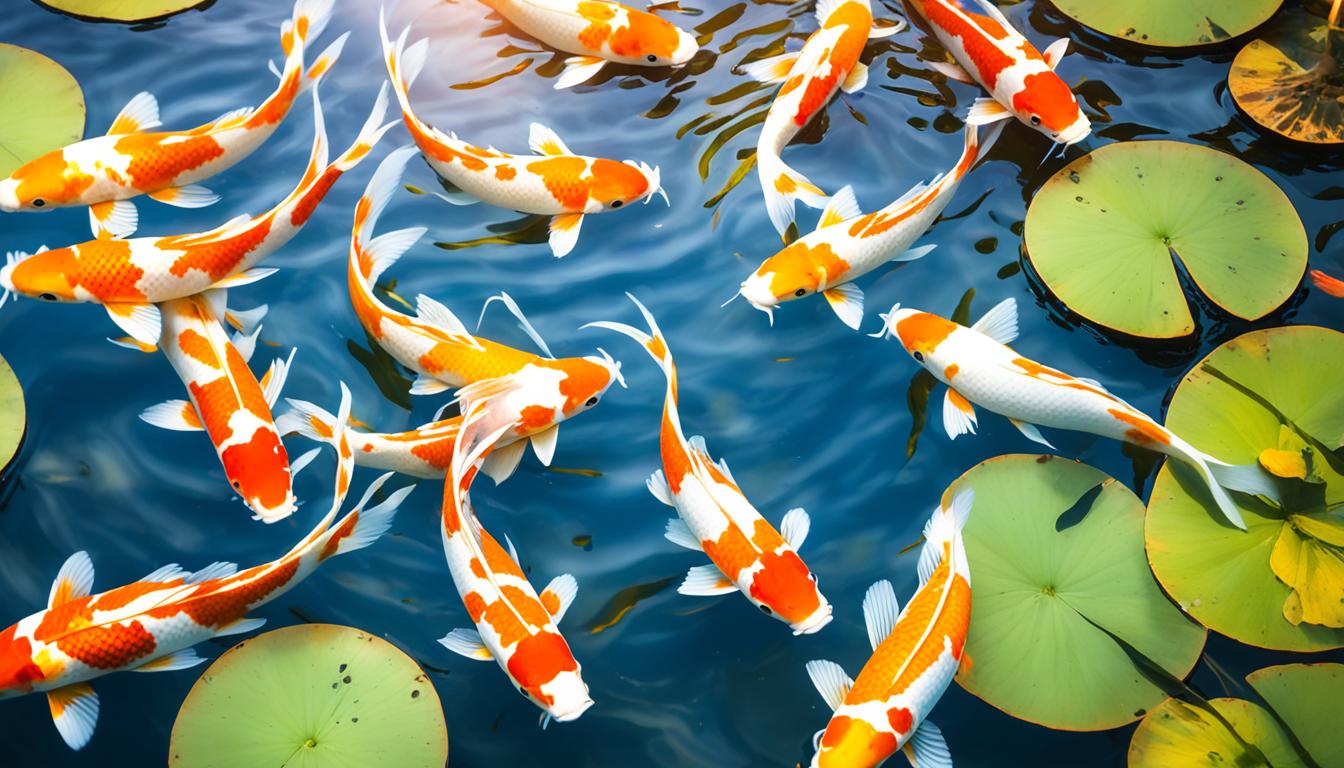The Lamp Eye Rasbora, also known as the Emerald Eye Rasbora, is a small freshwater fish with green eyes. It grows up to 2 inches in size and is peaceful, making it suitable for community tanks.
This species is a hardy fish that is relatively easy to care for and is an omnivore, eating a variety of foods including flakes, pellets, and live or frozen foods. The Lamp Eye Rasbora is a schooling fish native to Southeast Asia and is often traded under different names such as “green-eyed” or “hi-spot” rasbora.
It has a metallic silver base color that reflects light. In this guide, we will explore the care requirements, tank mates, and other aspects of keeping the Lamp Eye Rasbora in an aquarium environment.
Table of Contents
Introduction To Lamp Eye Rasbora
Lamp Eye Rasbora is a fascinating species that deserves attention in the aquarium world. With a rich history and background, it has captivated enthusiasts with its unique features. The Lamp Eye Rasbora, native to Austin, Texas, United States, is known for its bright and captivating eye color.
This small fish, growing up to 2 inches in size, makes an excellent addition to community tanks. When it comes to tank mates, Lamp Eye Rasboras are peaceful and can coexist with a variety of other fish species. With proper care and maintenance, they can live for a moderate lifespan.
In conclusion, the Lamp Eye Rasbora is a beautiful and captivating fish that brings life to any aquarium.

Lamp Eye Rasbora: Habitat And Behavior
Lamp Eye Rasbora, also known as Brevibora dorsiocellata, is a freshwater fish from the Cyprinidae family. These small fish display unique characteristics and adaptations in their natural habitat. They are typically found in rivers and streams in Southeast Asia. Lamp Eye Rasboras are known for their schooling behavior, where they swim together in large groups.
They have a moderate care level and are egg scatterers when it comes to breeding. In terms of size, Lamp Eye Rasboras can grow up to 2 inches long. They are omnivores and will eat a variety of foods, including flakes, small pellets, and live or frozen foods.
When kept in a tank, they can have compatible tank mates. Overall, Lamp Eye Rasboras are fascinating fish with their distinct behavior and habitat preferences.
Lamp Eye Rasbora: Care And Tank Requirements
Lamp Eye Rasbora, also known as Brevibora dorsiocellata, requires specific care and tank requirements. When setting up a tank for them, make sure to provide enough space as these fish can grow up to 2 inches in size. Maintain the water parameters at optimal levels and keep the temperature between 75-80°F.
As for tank mates, choose peaceful species that won’t outcompete or harass the Lamp Eye Rasboras. Avoid starting any sentence with repetitive terms, such as “When it comes to” or “If you. Following these guidelines will ensure the optimal care and well-being of your Lamp Eye Rasbora.
Lamp Eye Rasbora: Feeding And Nutrition
Lamp Eye Rasbora, like any other fish, have their dietary preferences and requirements. Providing them with the right food options is crucial for their optimal health. They thrive on a diet that consists of a variety of foods such as flakes, small pellets, and live or frozen foods like brine shrimp and daphnia.
It is important to ensure that their diet is balanced and meets their nutritional needs. When feeding Lamp Eye Rasbora, it is advisable to feed them small amounts multiple times a day rather than a large meal at once. This helps to prevent overfeeding and maintains water quality.
Additionally, it is recommended to observe their feeding behavior and adjust the amount of food accordingly. With the proper feeding tips and guidelines, you can ensure that your Lamp Eye Rasbora stay healthy and vibrant.
Lamp Eye Rasbora: Breeding And Reproduction
Lamp Eye Rasbora is a fascinating fish known for its unique reproductive behavior. To create the ideal breeding conditions, it is important to provide a well-maintained aquarium with suitable plants and hiding spots. The male Lamp Eye Rasboras will try to impress the females by showcasing their vibrant colors and performing courtship displays.
Once the female lays her eggs, it is crucial to remove the adults from the tank to prevent them from eating the eggs. Caring for the fry is essential for successful reproduction. Ensuring proper water conditions and feeding them a nutritious diet will promote their growth and survival.
Overall, understanding the reproductive behavior of Lamp Eye Rasbora is important for breeders looking to successfully reproduce this beautiful species.
Lamp Eye Rasbora: Common Health Issues And How To Prevent Them
Lamp Eye Rasboras, like any other fish, are susceptible to common health issues. It’s important to identify and treat these diseases promptly to ensure the well-being of your fish. Proper water quality management is crucial for maintaining optimal health. Regular water changes and filtration maintenance are essential.
Preventive measures, such as quarantining new fish before introducing them to the main tank, can help prevent the spread of diseases. Providing a balanced diet and maintaining proper temperature and pH levels are also important. Care guidelines for Lamp Eye Rasboras include creating a suitable habitat with plenty of hiding places, as well as choosing compatible tank mates.
By following these guidelines, you can help ensure the health and longevity of your Lamp Eye Rasboras.
Lamp Eye Rasbora: Frequently Asked Questions
The average lifespan of the Lamp Eye Rasbora is around 3 to 5 years. Differentiating between male and female Lamp Eye Rasboras can be challenging, but males usually have more vibrant colors and longer fins than females. Lamp Eye Rasboras can be kept with other peaceful fish species that prefer similar water conditions.
However, it’s essential to ensure that the tank mates are not aggressive or large enough to eat the smaller Rasboras. These small fish grow to about 2 inches in size and should be housed in a properly cycled and adequately sized aquarium.
Overall, Lamp Eye Rasboras are a beautiful addition to any peaceful community freshwater tank.
Frequently Asked Questions For Lamp Eye Rasbora
How Big Do Lampeye Rasbora Get?
Lampeye rasbora grow up to 2 inches in size.
How Big Do Emerald Eye Rasboras Get?
The emerald eye rasboras typically grow to a size of 2 inches.
Do Emerald Eye Rasboras Eat Shrimp?
Emerald Eye rasboras do not eat shrimp. They are omnivores and consume flakes, pellets, and live or frozen foods like brine shrimp and daphnia.
How Big Are Green Eye Rasboras?
Green eye rasboras typically grow to be about 2 inches in size.
Conclusion
The Lamp Eye Rasbora is a captivating and easy-to-maintain fish species that adds life and color to any freshwater aquarium. With its vibrant yellow and black stripes and striking red eyes, this fish is a popular choice among aquarists. It is a peaceful and sociable species that thrives in small groups, making it an excellent addition to a community tank.
The Lamp Eye Rasbora is relatively low-maintenance and can be fed a variety of foods, including flakes, small pellets, and live or frozen foods. It grows up to 2 inches in size, making it suitable for smaller aquarium setups. Overall, this species is a great choice for both beginners and experienced fishkeepers who are looking for an eye-catching and lively addition to their aquarium.
Consider adding Lamp Eye Rasboras to your tank and enjoy their beauty and charm.
I am a passionate aquarist with over 30 years of hands-on experience in fishkeeping. My journey began at a young age, collecting fish from the wild and learning through experimentation. Specializing in tropical fish, I bring a deep understanding of the hobby to FishKeepingMadeSimple. The site provides honest, detailed reviews of essential products and accessories to help fellow enthusiasts create the best environments for their fish.










[…] They are most active when kept in groups of six or more, where their natural schooling behavior can be observed as they gracefully navigate their aquatic surroundings.By understanding the origins and natural behaviors of Colombian Tetras, aquarists can create an aquarium environment that closely mirrors their native habitat, promoting the well-being and natural tendencies of these captivating fish. […]
[…] its natural habitat, these fish can even grow larger than their captive counterparts. Renowned for their striking appearance and active behavior, Giant Danios are a […]